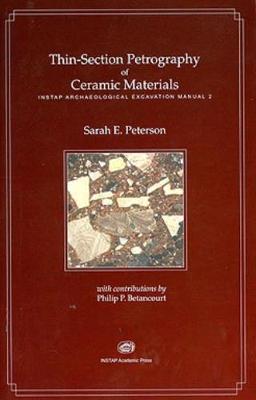INSTAP Archaeological Excavation Manual
2 primary works
Book 1
Retrieval of Materials with Water Separation Machines
by Sarah E. Peterson and Philip P. Betancourt
Published 1 January 2009
From the introduction: A water separation, or flotation, machine is an instrument that divides soil into three components: the material that floats (called flot or light fraction), the stones and other heavy portions that do not float (called residue or heavy fraction), and the particles that either dissolve in water or become suspended in it and are washed away. The primary purpose for utilizing such a device is the recovery of organic remains, such as charred seeds, charcoal, or small bones, which would otherwise be permanently lost. However, the machine is of great value for archaeological excavation because it allows for the collection of tiny artifacts of all classes, it divides them by size and weight, and it does not break fragile items. Water separation is very different from water screening. Use of a water separation machine requires four stages in the recovery of archaeological material: 1. Retrieval of archaeological sediments 2. Operation of the water separation machine 3. Sorting of the materials 4.
Study of the materials Contents: List of figures; Introduction; Goals for Using Water Separation Machines; History of Water Separation Machines; General Components of a Water Separation Machine; Retrieval of Soil; Sorting and Study of Remains; Contamination; Case Studies; Bibliography.
Study of the materials Contents: List of figures; Introduction; Goals for Using Water Separation Machines; History of Water Separation Machines; General Components of a Water Separation Machine; Retrieval of Soil; Sorting and Study of Remains; Contamination; Case Studies; Bibliography.
Book 2
Thin-Section Petrography of Ceramic Materials
by Sarah E. Peterson and Philip P. Betancourt
Published 1 January 2009
As part of the INSTAP Archaeological Excavation Manual series, Thin-Section Petrography of Ceramic Materials provides a concise overview of the history and application of the practice while detailing how this type of petrographic analysis can benefit archaeologists in the field. When thin-section analysis is employed as part of a thorough, multi-disciplinary study of ceramic materials, it provides a wealth of additional interpretative data to archaeologists, allowing for more accurate interpretations of the past, especially regarding pottery production, provenance, variations in technology over time and space, exchange networks on local and non-local scales, and even social issues such as choices of both manufacturers and consumers and traditions of manufacture.

